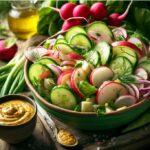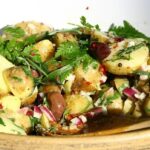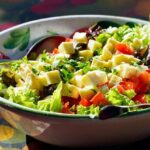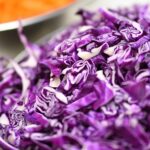
Light, crisp, and tangy – Gurkensalat, or German cucumber salad, is a refreshing staple found on tables across Germany. Known for its simple preparation and bright flavor, this salad is often served alongside meats, potatoes, or other hearty fare to balance the meal. It’s a go-to dish during warmer months and an easy addition to any traditional German dinner.
Whether dressed with a vinegar-based marinade or enriched with sour cream, Gurkensalat remains one of the most loved side dishes in German households. Let’s take a closer look at how to make this cool classic at home.
The Origins of Gurkensalat
Cucumber salad has a long-standing tradition in Central European kitchens. In Germany, it reflects both the simplicity and seasonality of regional home cooking. Traditionally made in the summer when cucumbers are in abundance, Gurkensalat uses ingredients that were readily available in German gardens and pantries.
Two major versions are common: one made with vinegar, sugar, and dill, and another with a creamy dressing using sour cream or yogurt. Both are popular across the country, though you’re more likely to find the creamy version in southern regions like Bavaria and Swabia.
Gurkensalat is often served at BBQs, beer gardens, and as part of cold platters. It also pairs beautifully with dishes like Schnitzel or Bratkartoffeln (Fried Potatoes).
Ingredients for Authentic Gurkensalat Recipe
Classic Vinegar-Based Version:
- 2 large cucumbers (preferably thin-skinned)
- 1 small white onion, thinly sliced
- 2 tablespoons white wine vinegar or apple cider vinegar
- 1 tablespoon sugar
- 2 tablespoons sunflower or neutral oil
- Salt and pepper to taste
- 1 tablespoon fresh dill, chopped (or 1 tsp dried)
Creamy Version:
- 2 large cucumbers
- 1/2 cup sour cream or plain yogurt
- 1 tablespoon white wine vinegar
- 1 teaspoon sugar
- Salt and pepper
- 1 tablespoon fresh dill
- Optional: 1 garlic clove, minced
Tools You’ll Need:
- Mandoline or sharp knife
- Mixing bowl
- Whisk or spoon
- Strainer or colander
How to Make Gurkensalat (Step-by-Step Instructions)
Step 1: Slice the Cucumbers
Use a mandoline or sharp knife to slice the cucumbers as thin as possible. Place them in a strainer and sprinkle generously with salt. Let sit for 20 to 30 minutes. This draws out excess water and prevents the salad from becoming watery.
Step 2: Drain and Squeeze
After the resting period, gently squeeze the cucumbers to remove even more moisture. This step is crucial for both flavor and texture.
Step 3: Make the Dressing
For the vinegar-based version: whisk together vinegar, sugar, oil, salt, pepper, and dill.
For the creamy version: combine sour cream or yogurt with vinegar, sugar, dill, and garlic (if using).
Step 4: Combine and Chill
Toss the drained cucumber slices and onions with the dressing. Mix well and refrigerate for at least 30 minutes to let the flavors meld.
Step 5: Serve Cold
Gurkensalat should be served well-chilled. Give it a final stir before serving and garnish with a bit of fresh dill or parsley.
How to Serve Gurkensalat
This salad is most often served as a side to meat-based main courses, particularly fried or grilled options like Schnitzel, Grilled Bratwurst, or Leberkäse. It’s also common at buffet tables and summer picnics.
You’ll often find Gurkensalat served alongside Kartoffelsalat (Potato Salad) or Rote-Bete-Salat (Beetroot Salad) as part of a cold plate.
A dry white wine like Silvaner or a light lager makes for an excellent pairing with this crisp dish.
Variations and Regional Twists
With Radishes:
Add thin slices of radish for a peppery bite.
With Garlic:
In southern Germany, garlic is often added to the creamy version for extra depth.
With Chives Instead of Dill:
Some regions substitute dill with chives for a different herbal note.
Sweet-and-Sour Version:
Use slightly more sugar to create a sweet-and-sour profile, especially in northern regions.
No Onion Version:
For a lighter taste, omit onions entirely – this is common in some household traditions.
Looking for more ideas? Check out our page of German Salad Recipes for everything from herring salads to cabbage slaws.
Gurkensalat is a quintessential German side dish – quick to make, refreshing to eat, and endlessly customizable. Whether you prefer it light and vinegary or creamy and rich, it brings a burst of cool flavor to your table and complements nearly any main course.
Try both versions and find your family’s favorite. Then explore other classics like Schwäbischer Kartoffelsalat or Fleischsalat to expand your German cooking repertoire.
For more flavorful ideas, browse our full collection of German Salad Recipes and bring authentic German tastes into your kitchen.







